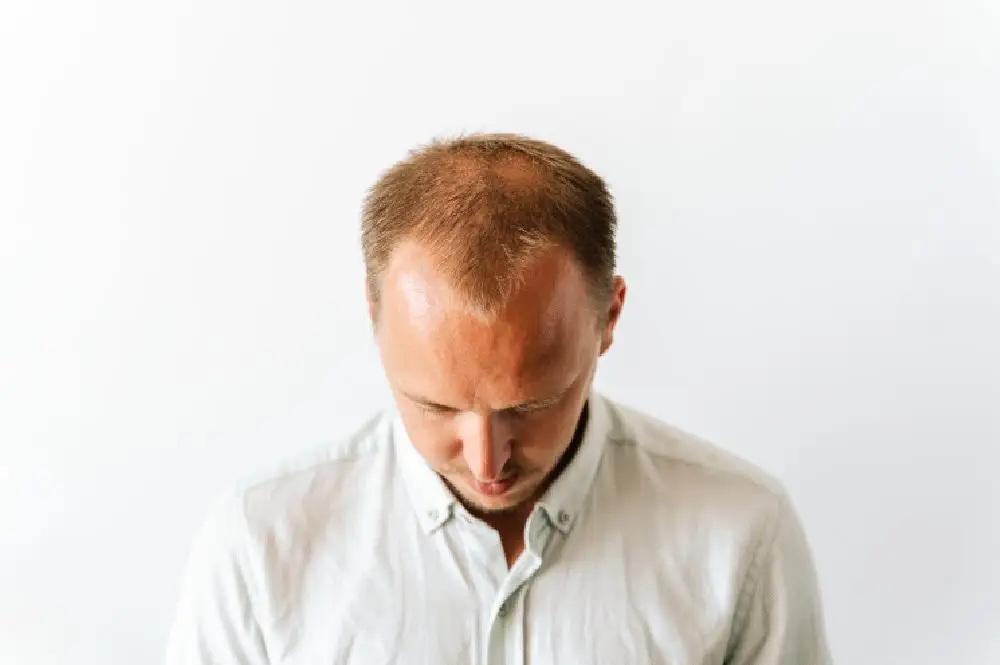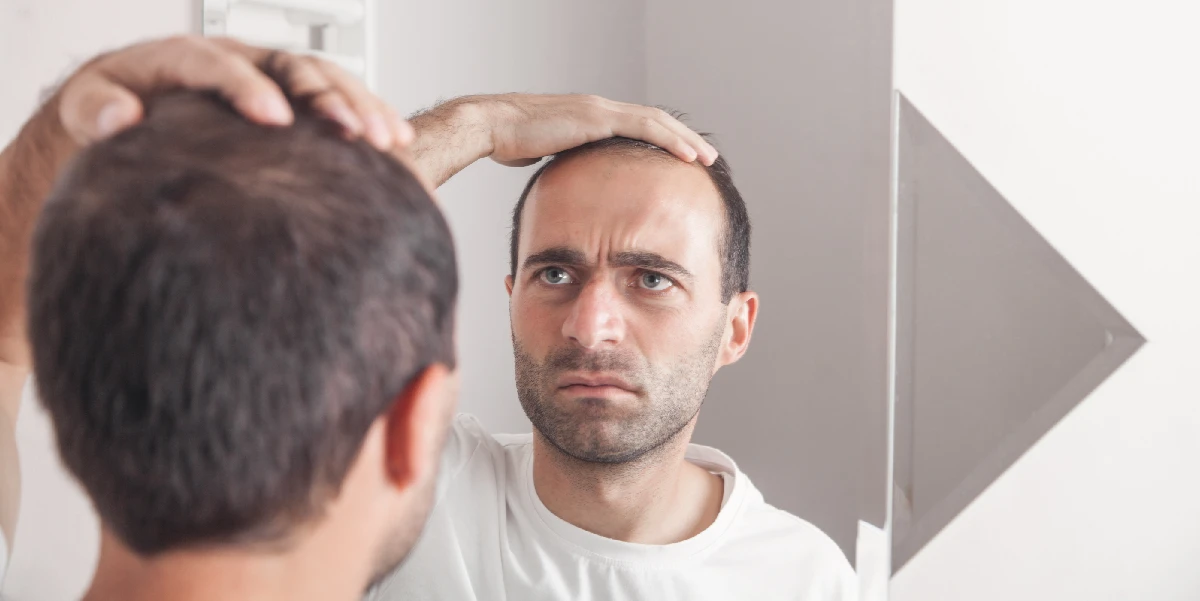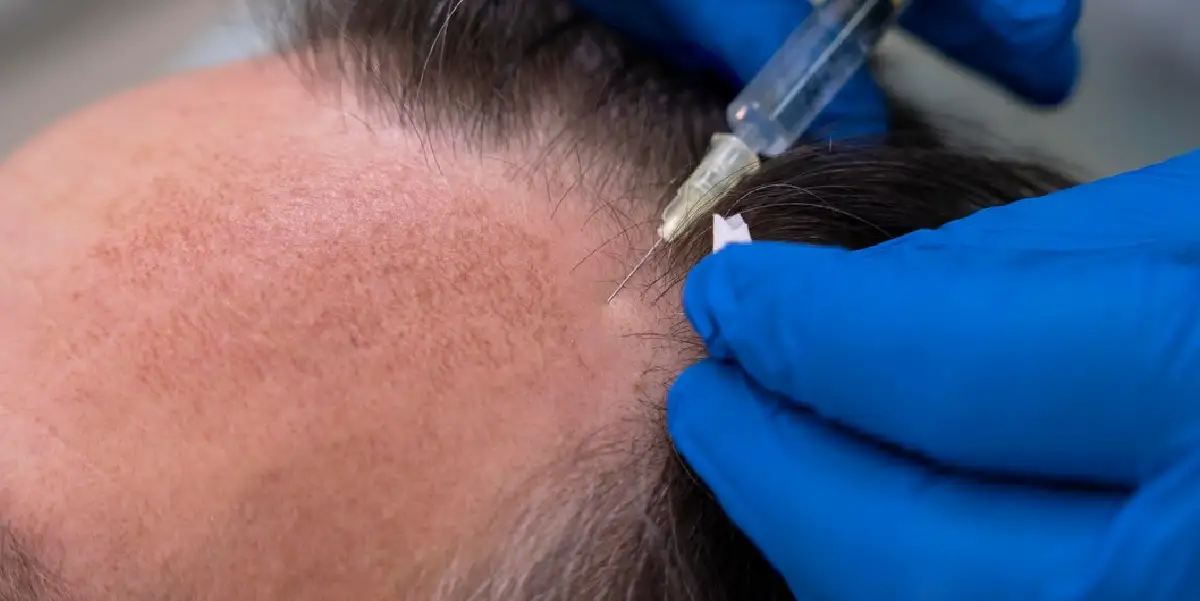Do You Have to Take Finast-eride After a Hair Transplant?
- By Harleys Clinic
- Aug, 29 2023
While hair transplant surgery is a highly effective solution to treat hair loss, it isn’t necessarily the first or final step. Many patients suffer from hereditary or male pattern balding, and so to reduce future hair loss, doctors often recommend continuing preventive treatments such as finast-eride.
Finast-eride is the most commonly prescribed drug for hair loss in males worldwide and one of the most successful non-surgical treatments for hair loss. This article discusses finast-eride, whether you should use it after a hair transplant, the advantages and disadvantages, and the alternatives. Let’s see what the expert hair transplant surgeon of the leading hair transplant clinic in Andheri West, Mumbai, says about this.
Role of Finast-eride
Finast-eride & Min-oxi-dil are the two FDA-approved hair loss treatment medications available as a topical treatment or oral tablet. Finast-eride works by reducing the production of a hormone called Di-hydro-tes-to-ster-one (DHT) which is responsible for follicles to shrink and eventually stopping growing hair.
It is commonly available in both 1mg and 5mg strengths. For hair loss, Finast-eride is prescribed at 1mg strength, while the 5mg treatment is available to treat benign prostate enlargement (BPH).
Finast-eride has proven to be highly effective at stopping and reversing hair loss. However, it is important to note that finast-eride effectively increases hair growth in the scalp only. Body hair is not affected as it is not sensitive to DHT levels. For patients looking to improve their facial hair, min-oxi-dil can be helpful to enhance beard growth. Min-oxi-dil is another FDA-approved hair loss treatment that works as a vasodilator. These are some of the effective treatment medications for baldness advised at our renowned hair transplant clinic, the best hair transplant clinic in Andheri, Mumbai.
Role of Finast-eride After Hair Transplant
You do not necessarily need to take the finast-eride after a hair transplant. It does not affect the success of the procedure itself.
However, most doctors recommend using finast-eride as an additional tool after the transplant procedure, particularly for patients with an-dro-genetic alopecia. By taking the finast-eride, patients can slow the progression of hair loss in their existing hair, which helps to preserve the results of their hair transplant procedure.
Although research on the benefits of finast-eride after hair transplant recovery is limited, initial results indicate there are three main advantages:
- Finast-eride After a Hair Transplant Controls Future Hair Loss.
While a hair transplant can have significantly transformative effects, men with male pattern baldness will continue to experience hair loss even after their transplant surgery. Transplanted hairs are unlikely to shed, but areas such as the crown, parietal hairline, and temples remain vulnerable to hair loss, and hair fall will continue if untreated. This progressive balding might surround the transplanted hairs, creating an unnatural and uneven appearance.
Finas-teride prevents this further hair loss by blocking the enzyme five alpha-reductase, which converts tes-to-ster-one to DHT, helping to maintain hair volume and even reverse past hair loss. The medication is appropriate, following both an FUE and Strip (FUT) procedure.
Initial studies into finast-eride aided hair transplant recovery are promising. One of the studies shows that while the patients with the transplant and placebo saw a 67% increase in visible hair, those treated with finast-eride saw an average of 94% increase.
Based on these results, finast-eride is commonly recommended following a hair transplant in patients suffering from an-dro-genic alopecia. Not treating future hair loss is one of the biggest reasons people may require a second hair transplant.
- Finast-eride After a Hair Transplant Speeds up Hair Growth
Finast-eride has a dual impact: it increases the total number of hairs and enhances the number of hairs in the anagen phase, commonly called the growth phase. Having more hairs in the Anagen phase than the resting phase (tel-og-en phase) would result in the patient experiencing greater and faster hair growth.
While finast-eride does not affect the transplanted hairs, this accelerated growth phase can help patients visually recover from a hair transplant procedure. Most traditional FUE and FUT procedures require the donor area to be trimmed to zero, which can be a clear indicator of a transplant. However, the increased, faster regrowth of donor areas can help patients avoid Tel-og-en effluvium (TE) in Donor areas and quickly return to normal appearance.
- Finast-eride After a Hair Transplant Reduces Shock Loss.
After a hair transplant procedure, the majority of patients encounter a period of hair shedding that typically occurs within 2-6 weeks. This type of hair fall is referred to as tel-og-en effluvium or “shock loss,” and is temporary: the shock of the surgery causes both newly transplanted hairs and neighbouring hairs to fall out, leaving the follicle roots securely embedded in the scalp. In the weeks and months that follow, these hairs will regrow.
Finast-eride is believed to reduce the risk of shock loss and encourage a faster recovery when Tel-og-en effluvium does occur. Studies have yet to conclude this definitively, but this understanding is widespread among hair restoration surgeons.
Should I Use Finast-eride Before the Hair Transplant?
You can take finast-eride before your transplant, and many clinics suggest starting as early as possible to prevent further balding. If the hair loss has progressed significantly, finast-eride may be advised to slow down the rate of hair loss.
How Long Should I Take Finast-eride?
Patients with an-dro-genic alopecia or male pattern hair loss may need to take finast-eride for extended periods of time, potentially indefinitely. Finast-eride also works best with daily intake, so long-term, regular oral intake is best to see the greatest results. If a patient stops using finast-eride, their production of DHT will resume, and hair loss can begin again. However, it is advisable to discuss with a hair surgeon before taking any medications.
Are There Any Options Other Than Finast-eride?
Apart from Finast-eride, there are several options like Min-oxi-dil, Natural DHT blockers, LLT, and Plasma.
- Minoxi-dil, the only other FDA-approved hair loss medication, is the most successful of these. Unlike finast-eride, min-oxi-dil does not affect patients’ hormones, making it a more suitable treatment, especially for female patients.
- Finast-eride has a 2-3% incidence of side effects, including low libido and, more rarely, depression and swelling around the chest. Patients should immediately consult their doctor if they experience these symptoms, and in these cases, min-oxi-dil may be a more appropriate treatment.
- Dut-aste-ride is an alternative DHT blocker, although it can have similar side effects. A range of natural DHT blockers can be included in the diet, including caffeine, rosemary oil, pumpkin seed oil, and black seed oil.
- LLLT involves using low-level laser or light therapy to stimulate hair growth and improve the overall health of hair follicles. This non-invasive treatment has minimal side effects, making it a good option for patients who are unable to or prefer not to take medications.
For patients who do not wish to continuously treat their hair loss, a second hair transplant or a revision hair transplant may be the most viable option to maintain a full head of hair. However, progressive balding can reduce the viable donor areas, so patients should be aware that a second transplant may not always be feasible.
Conclusion
At the Harleys Clinic, we’re proud to say that our hair transplant success rate is more than 90%. We provide the best hair transplant in Andheri, Mumbai. We want to ensure you’re satisfied with the results for years to come, so we recommend that before using any medications, you consult our hair surgeon, Dr. Sumit Agrawal, to treat your ongoing hair loss using finast-eride and min-oxi-dil.
This preventative treatment is not essential but recommended, and we at the Harleys Clinic will encourage you to follow the post-hair transplant specialized plan.
To learn more about hair transplant or hair transplant cost in India make a visit at Harleys Clinic.
You can also get a better understanding by looking at our hair transplant clinic reviews and our hair transplant before and after gallery. Let’s begin your journey towards combating baldness. With Harleys Clinic you will regain more than just hair; it includes restoring confidence!






